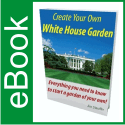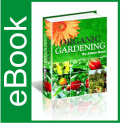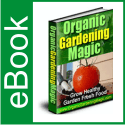Garden tools are good with your garden beds
Garden tools are good with your garden beds
Article by Andre B
Garden beds are positioned within the natural shape of the site to direct, catch and hold rain water. The whole garden is designed to imitate nature and use natural energies. Garden beds are a perfect idea to showcase your garden plants. Homeowners can benefit by choosing many different types of garden plants and planting them together to create a gorgeous and fresh outlook. Garden beds are often mulched with organic material such as wood chips. The plants can be arranged close together and plants such as oleander, with its glossy green foliage, are often included.
Organic garden bed mulches include woodchips, straw and compost. As organic mulches break down they release nutrients into the soil and help to improve its structure, but remember that organic mulches will need topping up annually. Organic matter will improve the soil structure creating a more porous rooting medium that will drain well and be permeable to air yet hold moisture and nutrients. Organic matter also provides food and energy to beneficial soil inhabitants like earthworms, moderates soil temperatures and releases nutrients as it decays. Organic gardening aims to avoid the use of chemicals, whether fertilizers or pesticides. Nutrients are provided through adding mulch and compost, rather than synthetic fertilizers.
Raised garden beds do have some drawbacks. It’s harder to weed the steep sides of the beds, and they do dry out more quickly in summer. Growing on the flat in drier times can be a better option for weed management and moisture retention. Raised garden beds are a very practical addition to your home. They are easy and cheap to build and maintain, and can be used for flowers or vegetables. Raised bed gardening, with its space-efficient and decor-friendly perks, also more notably presents a secure and valuable area for your plants, vegetables, and flowers.
Raised garden beds are typically 12 to 30 inches off the ground, so amputees, paraplegics and quadriplegics can garden easily–the same for older people who have difficulty stooping and bending. Raised beds it is. Raising your garden above the ground can solve some of the most frustrating problems gardeners face. An easy-to-build bed makes it possible for plants to thrive where soil is poor, wildlife is hungry, or the growing season is short.
Raised garden beds are also good for the more elderly gardener, as they provide maintenance of the bed without the associated stress on the lower back. The raised bed featured in this project uses our garden wall product Anchor Bayfield – however it could just as easily be built using Anchor Windsor Stone. Raised curvy beds — poor-soil gardeners, take note — hug beautiful small lawns in both the front and back yards. The garden beds are brimming with pristine perennials, blooming shrubs and exquisite ornamentation.
Plants are able to adapt to temporary droughts by shutting down their vascular systems. Leaves may wither and fall off, flowers and fruits may dry up, but plants usually recover quickly once they are watered. Planting around an object to highlight it.examples include roses over an arbor. Plants around a water feature.
Plant your new tree or shrub in the top of the hole. Water will now drain from the base of the hole through the gravel in the bottom of the trench. Plant labels are being engraved and installed as planting continues. Skillshare workers have assisted with engraving and also with Garden developments two days a week. Plants grow in dense clumps to 2 feet high. Use chives in a cottage, herb, or vegetable garden, or in containers.
Plants grow in dense clumps to 2 feet high. Use chives in a cottage, herb, or vegetable garden, or in containers. Plants used have been selected for trailing form, fragrance and texture. The Garden for Wildlife includes a self pruning hedge caged in chicken wire that lets the deer nibble only the new growth.
About the Author
Article by Andre B Garden tool
Use and distribution of this article is subject to our Publisher Guidelines
whereby the original author’s information and copyright must be included.

 July 14, 2012
July 14, 2012 







